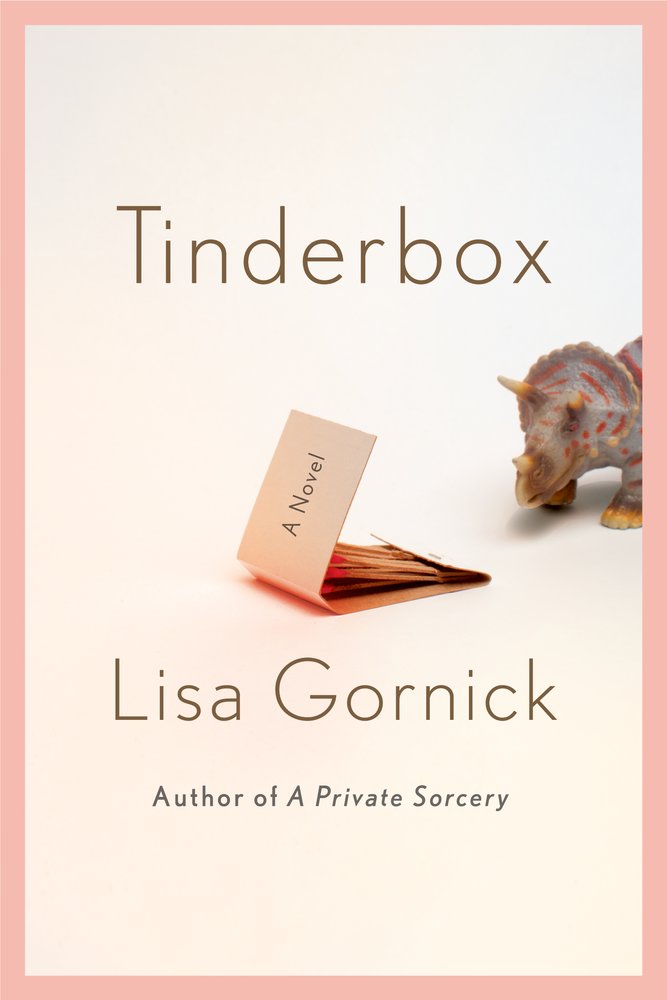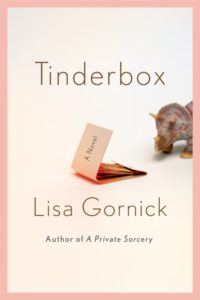
She’s a Writer. She’s Very Nosy.
 In Lisa Gornick’s haunting second novel, Tinderbox, a young nanny recently arrived from Peru rattles both the composure and professional ethics of psychoanalyst Myra Gold. But this is not new territory for Gornick, who is on the faculty at the Columbia University Center for Psychoanalytic Training and Research and a graduate of the writing program at New York University. Her first novel, A Private Sorcery, revolved around Saul Dubinsky, a sensitive, dedicated psychiatrist who turns to drugs after the suicide of a patient. Gornick recently chatted with fiction editor Yona Zeldis McDonough about the ways in which the fields of literature and psychotherapy feed each other, the Jewish experience filtered through the lenses of Morocco and Peru, and the redemptive power of fire.
In Lisa Gornick’s haunting second novel, Tinderbox, a young nanny recently arrived from Peru rattles both the composure and professional ethics of psychoanalyst Myra Gold. But this is not new territory for Gornick, who is on the faculty at the Columbia University Center for Psychoanalytic Training and Research and a graduate of the writing program at New York University. Her first novel, A Private Sorcery, revolved around Saul Dubinsky, a sensitive, dedicated psychiatrist who turns to drugs after the suicide of a patient. Gornick recently chatted with fiction editor Yona Zeldis McDonough about the ways in which the fields of literature and psychotherapy feed each other, the Jewish experience filtered through the lenses of Morocco and Peru, and the redemptive power of fire.
YZM: You are a novelist with training and degrees in clinical psychology and psychoanalysis; can you talk about how fiction writing and psychology come together (if they do) in your work?
LG: Last summer, I stayed at a bed and breakfast in Maine. Next to the main house was an enormous old barn that stretched towards the back of the property like a railroad car. It was sealed tight as a drum, but my antennae went up: inside that barn was a story. My husband watched me reading the literature about the property (the house had once been the home of the Woolworth brothers who’d raised prize harness race horses and entertained the likes of Clark Gable), examining the photographs in the album left out in the breakfast room, striking up a conversation with the current owner, and, of course, ultimately asking if he would open the barn doors for me. “She’s a writer,” he apologized to the owner. “She’s very nosy.”
Although handled with more tact and in the service of healing, nosy equally describes the psychoanalyst, also always on the alert for the moments when emotions peek out from the crevice between words and their cadence, for the pulse points in a patient’s stream of words, for the places where a gentle inquiry, perhaps just the repetition of the patient’s words, will open a door. In an essay “Analyzing and Novelizing,” I gave the much altered example of a remote scientist who, after many months of treatment, used the phrase, “When we lived in Old Millbrook,” and how it was my writerly ear that sensed the tragic story behind these seven syllables.
Freud, whose early immersion in literature and writing suggests he might with a different turn of events have become a novelist himself, was deeply ambivalent about creative writers, a subject I’ve written about in an essay “Freud and the Creative Writer.” On the one hand, he credited creative writers with having already discovered everything analysts would learn in their consultation rooms. On the other hand, he viewed creative writers as on the verge of psychosis. Putting aside these idealizing and devaluing extremes, analysts and creative writers clearly share many tools — free association, attentiveness to language, dreams. Most centrally, both work with narratives, how they are constructed and unfold, an initial tale often hiding a more complicated and taboo story yet to be told.



